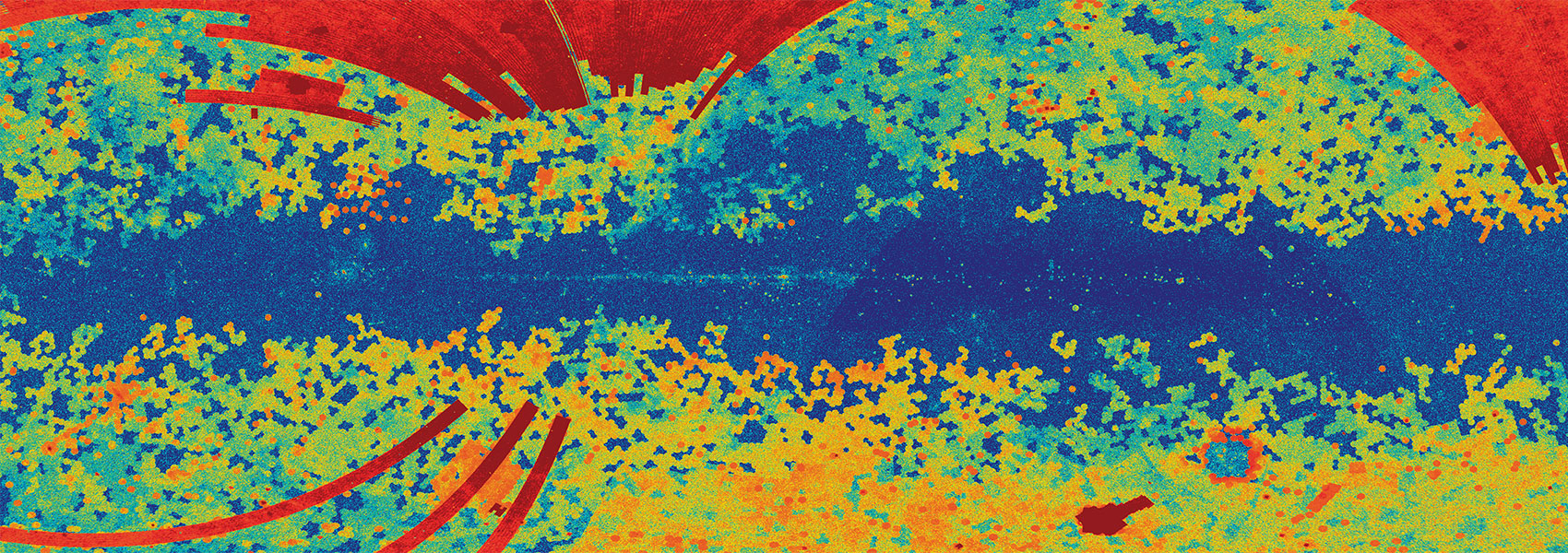April
1996
•
1996ApJ...461..572S
Authors
•
Squires, G.
•
Kaiser, N.
•
Babul, A.
•
Fahlman, G.
•
Woods, D.
•
Neumann, D. M.
•
Boehringer, H.
Abstract
•
We report on the detection of dark matter in the cluster Abell 2218 using the weak gravitational distortion of background galaxies. We find a highly significant, coherent detection of the distortion in the images of the background galaxies. We use Hubble Space Telescope (HST) images from the Medium Deep Survey to calibrate the suppression in the observed distortion due to atmospheric smearing. The inferred two-dimensional mass distribution has a peak that is coincident with the optical and X-ray centroid. The qualitative distributions of the cluster light, the X-ray emission, and the dark matter are similar and the projected total mass, gas, and light surface densities are consistent with an r^-1^ profile at a distance of r > 180" from the cluster cD galaxy. Using the weak lensing technique, we determine a lower bound for the total mass in A2218 of (3.9 +/- 0.7) x 10^14^ h^-1^ M_sun_ within a fiducial aperture of radius 0.4 h^-1^ Mpc. The associated cluster mass-to-light ratio is (440 +/- 80) h M_sun_/L_sunB_. The mass estimated by the weak lensing method is consistent with that inferred from the X-ray data under the assumption of hydrostatic equilibrium, and we derive an upper bound for the gas-to- total mass ratio at 400 h^-1^ kpc of M_gas_/M_tot_ = (0.04 +/- 0.02) h^- 3/2^. The lensing estimates assumes that a control annulus extending from 0.4-0.7 h^-1^ Mpc is empty. Correcting for the mean surface density matter in the control annulus as inferred from the X-ray data increases the lensing mass estimate by ~20%, and the lensing and X-ray mass estimates are still consistent within the experimental uncertainties.
Links




